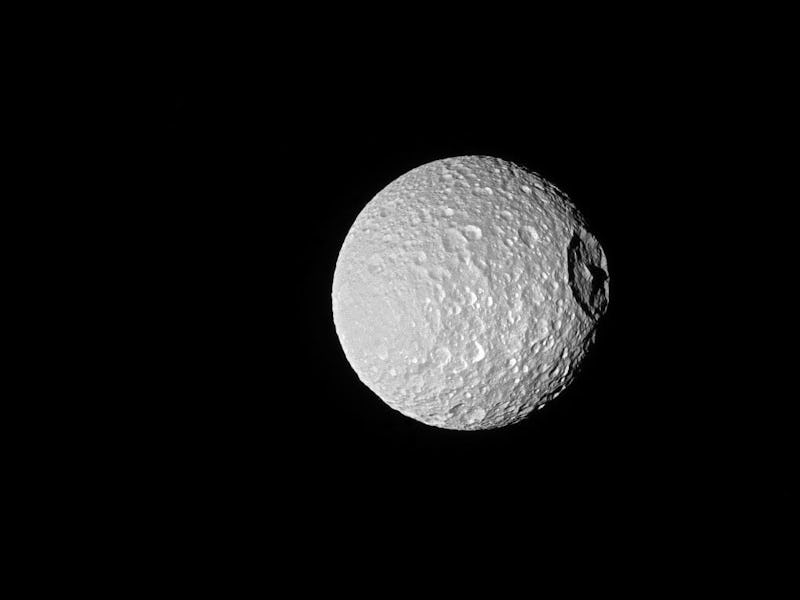Though it could pass for a still from the movies, this object is not the Death Star from Star Wars — it’s actually one of Saturn’s confirmed 62 moons, known as Mimas. This particular image was taken by NASA’s Cassini spacecraft during its closest flyby of the moon in 2010. The sunlit image highlights the thousands of smaller craters on the surface of Mimas, shedding light on a small world that’s been pummeled pretty badly.
Named after the mythical Greek giant, Mimas (discovered by William Herschel in 1789) is really no giant at all. It’s surface area is roughly the same as Spain’s, making it one of the smallest known objects with an orbit and self gravitation in the universe.
The most notable feature of this tiny little moon is it’s giant crater, modestly named Herschel. In the center of the crater sits a mountain that is taller than Mount Everest. Herschel takes up a third of the diameter of Mimas, which resembles the focus lens and Superlaser of Star Wars’ Death Star, featured throughout the popular franchise series.
Coincidentally, the concept for the Death Star was created three years before scientists discovered Mimas even had a crater of this size.
Scientists believe Mimas is mostly made of ice and may even have a liquid water ocean floating in it’s core, because it tends to wobble quite a bit in orbit.
“The data suggests that something is not right, so to speak, inside Mimas,” said Radwan Tajeddine, a Cassini research associate. “The amount of wobble we measured is double what was predicted.”
But, it would be very surprising if Mimas was an “ocean world” — as scientists call it, because it doesn’t have any geological activity that indicates it is. If it did have an ocean, it would have to be about 20 miles beneath the cratered surface.
Mimas still holds quite a bit of mystery and it will take more probing before scientists have a better handle on this wobbling pipsqueak.
